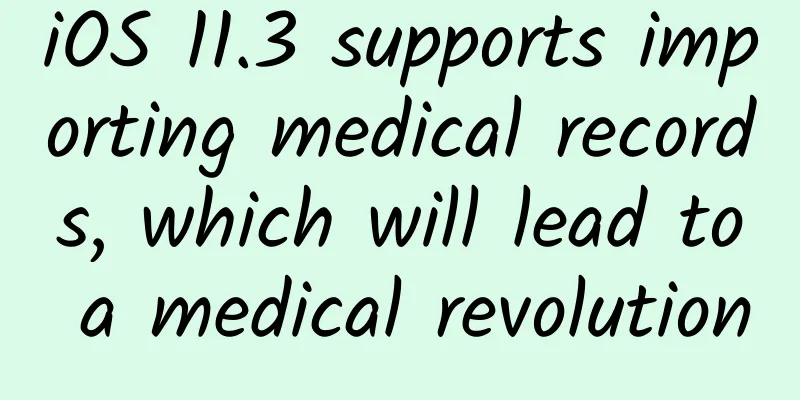How long does it take for Yang Kang to exercise? Will it cause myocarditis? One article explains

|
The number of people who have recovered from the novel coronavirus infection is gradually increasing. Those who are used to regular exercise can't wait to resume exercising, while those who are worried about the recurrence of the disease hope to lie down for a few more days to fully recover. In fact, starting exercise too soon after infection can make the condition worse, and starting exercise too late can delay the recovery of body functions . The best time depends mainly on the individual's usual health status, the severity of the infection, and the duration of symptoms. Based on your own situation, you can find below the appropriate time to start exercise, how to increase the amount of exercise, and the danger signals that prompt you to stop exercising immediately. 01 There are symptoms Don't do any exercise After the human body is infected with the new coronavirus, when the symptoms have not disappeared or are being controlled with medication, the body needs rest to resist the virus and complete repairs. It is not recommended to perform any deliberate exercise during this period. The "symptoms" here refer to fever, cough, sore throat, nasal congestion, runny nose and diarrhea. Loss of smell or taste is not included because these two items may last for a long time and have no obvious impact on movement. Copyright image, no permission to reprint For daily activities, it is also recommended to complete only what you can do during this period . If you feel palpitations and shortness of breath when doing housework such as mopping the floor, try not to do it first and complete it after the symptoms improve. When life or work requires a lot of physical activity, such as organizing and carrying heavy objects, riding a bicycle or running for a long time at high speed, it is recommended to slowly recover according to the following steps to return to exercise. 02 The symptoms disappeared Rest for at least 7 more days Once symptoms subside, you can try more daily activities, such as walking and simple cleaning, and slowly return to your normal activity level without causing discomfort. As for exercise, most people can judge the timing of resuming exercise by following the following, but there are three types of people who need a doctor's permission to safely start exercising. The first category is people with underlying diseases : such as chronic cardiovascular and respiratory diseases. After patients feel that their COVID-19 symptoms have improved, they still need doctors to consider when to start exercising based on the condition of their underlying diseases. The second category is those with severe COVID-19 symptoms : if they need hospitalization due to COVID-19, are diagnosed with pneumonia or respiratory failure, etc., they should follow the discharge instructions to complete the reexamination and resume exercise with the doctor's permission. The third category is those who have experienced cardiopulmonary symptoms after infection : including chest pain, chest tightness, palpitations, dyspnea, dizziness or syncope, edema, etc. that are not related to cough. It is recommended to complete relevant examinations to rule out myocardial damage and lung problems before starting exercise. After healthy young people were infected with the new coronavirus, about 0.7% had abnormal heart test results and 0.045% developed myocarditis. Myocardial damage may be aggravated by exercise and even lead to cardiac arrest. If myocarditis is confirmed, it is necessary to rest for at least 3 to 6 months. If you do not belong to the above three categories, and your infection symptoms are only fever, sore throat, cough or muscle pain, you can start trying to resume exercise if you meet all the following conditions : Rest for at least 10 days after symptoms begin; Rest for at least 7 days after symptoms disappear; Medications that relieve symptoms have been discontinued; No discomfort during daily activities; Walk 500 meters on flat ground without obvious fatigue or difficulty breathing. For infected people with no symptoms at all, it is recommended to stop exercise for 10 days after the nucleic acid or antigen test is positive . In addition, for the health of others, please quarantine yourself according to epidemic prevention requirements before going out or participating in group sports. 03 Start exercising Slow recovery through 5 stages The timing of starting exercise depends on your health status before infection, the severity and recovery after infection, and the time to fully resume your original exercise habits is also related to the previous frequency, amount and intensity of exercise. People who usually exercise less and more gently recover relatively quickly . It is recommended to choose familiar types of exercise first, reduce the duration and intensity by half for the 1st to 3rd exercises, and increase it to 75% of the pre-infection level for the 4th to 6th times . You can try to fully recover when there is no discomfort. If you exercised regularly every week before this infection, exercised for a long time each time, sometimes with an intensity close to your maximum heart rate, and even participated in competitions frequently, it is recommended that you recover at a slower pace according to the following five stages (maximum heart rate = 220-age [years]) . Map: Guokr The first few stages may be easy to do, but you should not skip any stage. You can consider participating in the competition only after completing 5 stages. After entering each stage, complete at least 1~2 exercises with the above standards. Only when you feel relaxed can you consider entering the next stage . The advanced time may be as short as one or two days, or as long as several weeks. In this way, it will take at least half a month from the onset of symptoms to return to the previous amount and intensity of exercise . The specific time varies from person to person. For example, young people who only exercised briskly before and had mild symptoms may recover in more than a week, while older people who are preparing to participate in a marathon or football game and have severe symptoms may need several months. Don't force yourself to catch up with others just because you see that they are fine after exercising. Moreover, even if you are not sick, if you don't exercise for half a month, your physical fitness and skills will deteriorate. If you are too impatient when you start again, you are prone to sports injuries in your muscles and joints. Copyright image, no permission to reprint 04 These danger signs appear Stop exercising immediately There are two types of red flags to watch for when resuming exercise: signs of COVID-19-related illness and signs of fatigue from overexertion . Among those infected with the new coronavirus, a very small number of people will develop myocarditis or pulmonary embolism after their fever and other symptoms improve. Although the overall risk for young people is very low, these conditions may be aggravated by exercise and even life-threatening. Therefore, if the following danger signs appear during the process of resuming exercise, you need to stop exercising immediately and seek medical attention in time: chest pain, obvious palpitations or rapid heartbeat, dyspnea that does not match the intensity of exercise, leg swelling, etc. Even if the recovery is normal, resuming exercise too early and too quickly will exceed the body's tolerance. The following symptoms indicate that you need to rest: fatigue or muscle soreness is significantly higher than before infection, sleep quality decreases, and resting heart rate increases by more than 10 beats/minute the next morning after exercise . At this time, it is recommended to stop exercising and rest for at least 1-2 days, and then restart the previous stage or retreat one stage after the above symptoms disappear. In order to make it easier to compare your fatigue levels before and after the infection, when you resume exercise, try to choose familiar types and methods first. 05 Children and adolescents Start playing games and exercising earlier The above is the safe time and method for adults to return to sports. Because children usually have milder symptoms of COVID-19 than adults, they can resume physical activities earlier. Copyright image, no permission to reprint Children and adolescents should not exercise until their symptoms of infection have resolved (excluding loss of smell and taste). One day after the symptoms disappear, asymptomatic or mildly symptomatic infected persons (body temperature above 38°C for <4 days, other symptoms lasting <1 week) can resume games and sports if they have completed isolation according to epidemic prevention requirements and have no discomfort in daily life . If the symptoms are more severe, require hospitalization or have underlying diseases, it is recommended to obtain permission from a doctor before starting exercise. As for the recovery speed, children under 12 years old can gradually increase the amount of exercise according to their own feelings. It is recommended that infected people aged 12 and above first try to do half an hour of light aerobic exercise by themselves, then resume daily full exercise, and finally participate in group sports. During the process of resuming exercise, it is recommended to gradually extend the time and increase the intensity. Children and adolescents, their parents, teachers, and coaches are asked to observe abnormal reactions during exercise . If chest pain, palpitations, abnormal shortness of breath or fainting occurs, they should stop exercising immediately and seek medical attention in time. Copyright image, no permission to reprint In fact, this year, several authoritative institutions have also proposed, based on the characteristics of recent virus strains and new research data, that the time to start exercising after "Yang Kang" should be advanced to the disappearance of symptoms. On the first to third days, exercise at 50% of the intensity before infection for 15 to 30 minutes, and on the fourth to sixth days, increase to 75% of the intensity for 30 minutes. Full recovery is achieved without discomfort. This reflects the efforts to strike a balance between the risks and benefits of exercise. However, for non-professional athletes, sports are always there waiting for us to return, and there will be training and competition opportunities in the future. Long-term health and a comfortable and smooth return may be more important. References: [1] Gluckman T, Bhave N, et al. 2022 ACC Expert Consensus Decision Pathway on Cardiovascular Sequelae of COVID-19 in Adults: Myocarditis and Other Myocardial Involvement, Post-Acute Sequelae of SARS-CoV-2 Infection, and Return to Play. J Am Coll Cardiol. 2022 May, 79 (17) 1717–1756. [2] Elliott N, Martin R, Heron N, Elliott J, Grimstead D, Biswas A. Infographic. Graduated return to play guidance following COVID-19 infection. Br J Sports Med. 2020 Oct;54(19):1174-1175. [3] DoD COVID-19 Practice Management Guide Clinical Management of COVID-19. 2020. [4] Return to sports and exercise during the COVID-19 pandemic: Guidance for high school and collegiate athletic programs. American College of Sports Medicine, 2020. [5] Hughes DC, Orchard JW, Partridge EM, La Gerche A, Broderick C. Return to exercise post-COVID-19 infection: A pragmatic approach in mid-2022. J Sci Med Sport. 2022 Jul;25(7):544-547. [6] Metzl JD, McElheny K, Robinson JN, Scott DA, Sutton KM, Toresdahl BG. Considerations for Return to Exercise Following Mild-to-Moderate COVID-19 in the Recreational Athlete. HSS J. 2020 Nov;16(Suppl 1):102-107. [7] Moulson N, Petek BJ, Drezner JA, Harmon KG, Kliethermes SA, Patel MR, Baggish AL; Outcomes Registry for Cardiac Conditions in Athletes Investigators. SARS-CoV-2 Cardiac Involvement in Young Competitive Athletes. Circulation. 2021 Jul 27;144(4):256-266. [8] Jewson J, McNamara A, Fitzpatrick J. Life after COVID-19: The importance of a safe return to physical activity. Aust J Gen Pract. 2020 Nov 25;49. [9] Singer ME, Taub IB, Kaelber DC. Risk of Myocarditis from COVID-19 Infection in People Under Age 20: A Population-Based Analysis. medRxiv [Preprint]. 2022 Mar 21:2021.07.23.21260998. [10] https://www.aap.org/en/pages/2019-novel-coronavirus-covid-19-infections/clinical-guidance/covid-19-interim-guidance-return-to-sports/ (2022.09.09) Author: Dai Tianyi, former attending physician of the Department of Cardiology at Beijing Anzhen Hospital, certified by the American Strength and Conditioning Association as a strength and conditioning expert Source: Guokr |
Recommend
Full screen is popular, but are you still confused about this concept like me?
In the recent mobile phone circle, the word "...
In order to slow global warming, they are dumping more than a thousand liters of poop into the sea | Environmental Trumpet
Hello everyone, this is the 23rd issue of the Env...
Subvert your cognition! The most mysterious cells in our body do not belong to us?
© Ranta Images/Getty; Burazin Leviathan Press: Dr...
Lenovo launches 7-inch tablet S5000 to compete with Asus Nexus 7
[September 9 news] After ASUS launched the Nexus 7...
Tesla's logic and troubles in moving eastward: There are still three major problems to be solved in building a factory
The rumor was eventually debunked in the clarific...
Attention! If you wash your down jacket like this again, it may be ruined! See here for the correct cleaning method!
The spring season ushers in the new year's wa...
What is the general mini program server configuration? What server configuration does the mini program require?
What is the general mini program server configura...
Premature foldable phone: a fear-based innovation
In four months, Royole, Samsung, and Huawei have ...
Can psychiatric drugs cause menstrual cycle disorders in women? What experts say
Today, we are going to talk about the medical mys...
Set five world records! See the super "wisdom" behind the Shenzhen-Zhongshan Bridge
Editor's Note Millions of IPs create science ...
Three departments jointly call for a ban on this type of food! Do “gold-plated” foods have any nutritional value?
Gold foil chocolate, gold foil cake, even gold fo...
Guess what? It’s not mind reading, but predictive processing of the brain
Produced by: Science Popularization China Author:...
Interpretation of iResearch's 2014 DSP Industry Analysis Report
iResearch recently released the "2014 DSP In...
SEM promotion: teach you how to do data analysis step by step!
Many people who have just started SEM find data a...
Teach you to develop high emotional intelligence communication skills and ignite your sense of humor Baidu Cloud Download
Everyone has emotions, which lead to emotional in...









